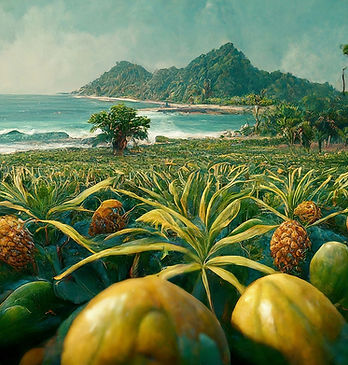

Hin-Klia



Al-Robicca

Bamin-Go

Ol-Jahar Oil Field
Summary
The Hin, Klia, and Morokhar peoples inhabit Hin Klia, Mir’s second largest and most southern landmass. Despite its modest GDP per capita, Hin Klia’s vast oil resources make the country a pivotal player in the Mirian economy. While feeling the effects of climate change (primarily wildfires, drought, and desertification), Hin Klia’s leaders have played an active role in making fossil fuels the primary energy source across Mir.
Oil production is concentrated in areas historically controlled by the Hin and Klia who live in the central and western regions of Hin-Klia. As a result, the country’s political oligarchy has reflected the needs of these two groups, often to the exclusion of the Morokhar people. The Morokhars’ prominence in the eastern agricultural region, in a country that must import food to keep up with population growth, has given the group increasing political clout. The growing demand for Morokhar empowerment, and the desire of the current leadership to create a stable environment for energy production, have made the country ripe for political change.
Hin-Klia is also trying to diversify its economy. One of the sectors it has explored is the development of the tropical vacation island Baro-Kai'i as a luxury destination.

Baro-Kai'i El-Sharm
Laurograd

Mwenekhar

Olopene-Pa

Ba-Sogal
Geography and Resources
Location: southern most country
Agriculture: bananas, papayas, mango, pineapples, oranges, dragon fruit, kiwi
Natural Resources: oil, gas, sand, gravel, gems, gold, fertilizer, copper,
Climate: tropical, desert, arid, Mediterranean,
Horticultural Zones: 8 - 11

El-Sharm West Costra Neighborhood

Fertile Coast of Genganeli
People and Groups
Population: 145 million (Rank 3)
Median Age: 24.3 years (Rank 5)
Life Expectancy: 62.8 years (Rank 5)
Net Migration Rate: significant emigration
Ethnic Groups:
Hins 40%
Klia 40%
Morokhar 20%


Tukabeo-Al

Baidu-El
Environment and Energy
Vegetation: deserts/arid plains, tropical, subtropical, and Mediterranean coasts
Pollution Sources: oil and gas drilling and refining, fracking, tourism, industry
Climate Change: desertification, rising sea-level, wildfires, hurricanes/storms, salination of agricultural land
Energy Sources:
Coal: 5% Solar: 15%
Oil and Gas: 75% Wind: 5%
Nuclear: 0% Hydro: 0%

Ol-Jahar Mountains

Baro Kai'i Island Aliala Resort
Government
Type: oligarchy
Cabinet Members:
President
Morokhar Opposition Party
3 representatives:
Gas and oil
Environmental
Military
Elections: none
Judicial System: not independence

Plains of Genganeli

Baro-Kai'i
Economy
GDP: 530 billion
GDP per capita: 3700
Economic Sectors:
Oil 40%
Gas 40%
Agriculture 10%
Services 10%
Imports: Food and Raw Materials
Exports: Energy
Starting Budget: 400

Koban-Kar Military Base

Bamin-Go Desert
Military
Weapons: well-equipped
Technology: limited
Cyberwarfare Capabilities:
Defense Some
Intelligence Some
Cyber Weak
Offensive Weak
Nuclear Weapons: 0
